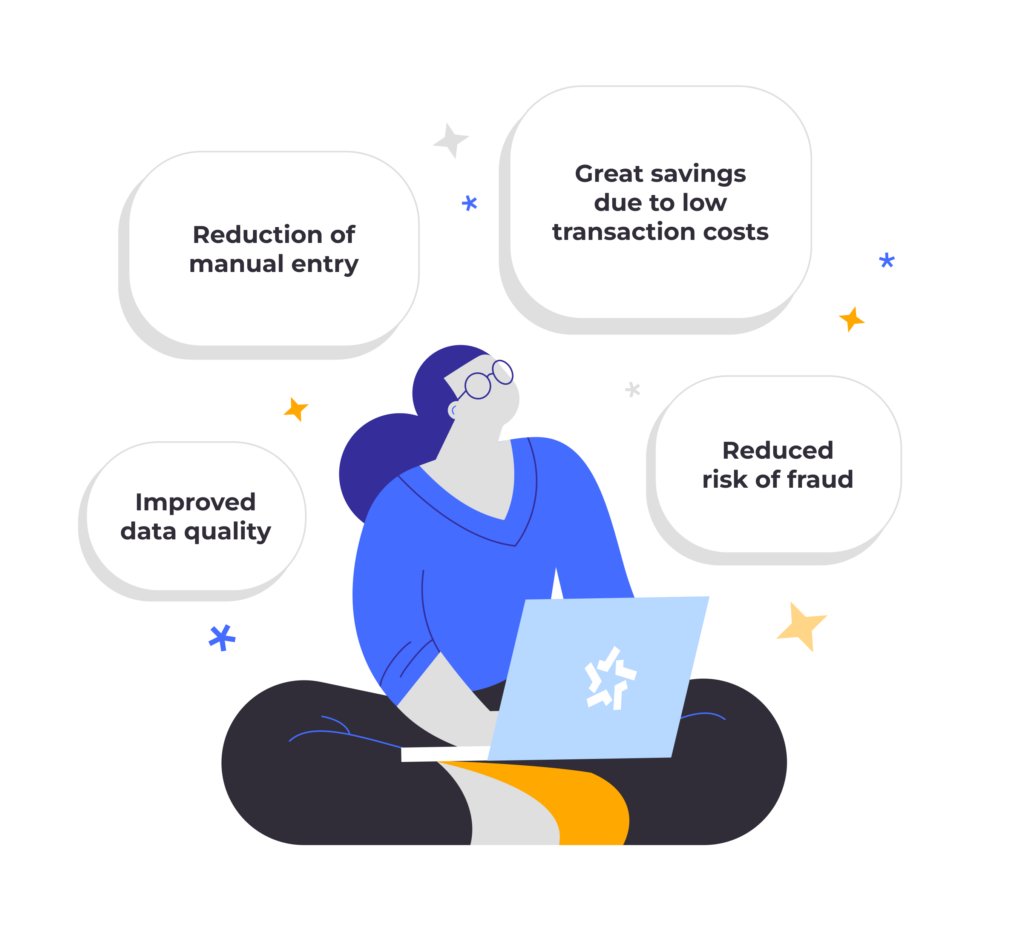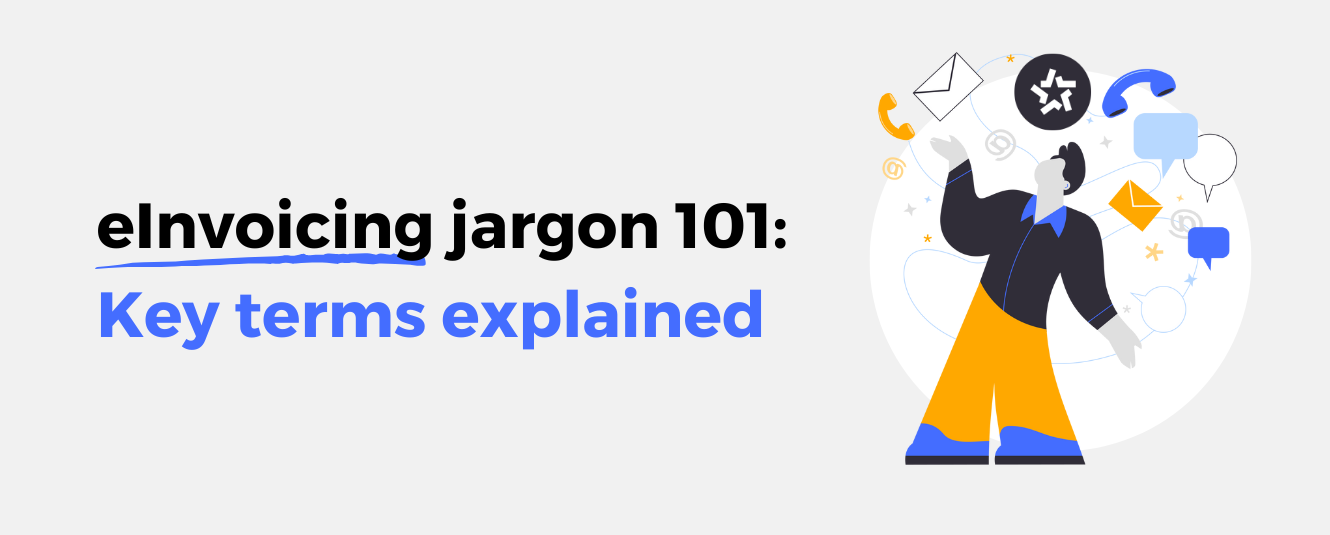Peppol as Part of Your Company’s Digital Transformation

In the post-pandemic landscape of 2023, the remote work trend continues to gain momentum, particularly among knowledge workers. While the last couple of years have witnessed significant shifts in the way we work, it’s essential to recognize that businesses were already integrating digital systems into their operations. This transition has been particularly evident in the case of governments and international enterprises, where the advantages have been evident for an extended period.
- Facilitating Greater Cooperation and Efficiency: Businesses, especially those operating on a global scale, have experienced enhanced cooperation and efficiency by embracing digital tools. The ability to seamlessly collaborate across offices has become a cornerstone of modern work practices.
- Automating Repetitive Processes: The integration of digital systems has allowed organizations to automate mundane and repetitive manual processes, streamlining operations and freeing up resources for more strategic tasks.
Digital transformation, once considered a savvy alternative, is now imperative for survival in an increasingly international and competitive market. Businesses face challenges such as wage stagnation, widespread job losses, and shifts in consumer spending habits. Embracing digital transformation has evolved from a strategic move to a fundamental necessity, offering enhanced efficiency, better customer value, and increased profits/savings.
This article explores the landscape of digital transformation, delving into what it entails, the significance of Peppol in this context, and how its benefits can be integral to your company’s digital transformation journey. Additionally, we’ll discuss the process of connecting to the Peppol network, shedding light on its increasing mandate in new countries and regions.
Peppol is being mandated in new countries and regions at an increasing pace. And being Peppol ready can make the difference between gaining more business and losing existing business.
Peppol’s rapid adoption in various countries and regions underscores its growing importance. Being Peppol ready is no longer just an option; it can be the decisive factor between acquiring new business opportunities and potentially losing existing ones in this dynamic business environment. Stay tuned as we navigate through the intricacies of Peppol and its role in shaping the digital future of businesses.
Digital transformation as a business imperative
As mentioned above, digital transformation is a necessary part of any business’ strategy, whether that be expansion, greater profits or simply holding a segment of the market in turbulent conditions.
In a nutshell, digital transformation can be defined as digitizing the internal and/ or customer-facing processes that govern your business. This catch-all definition is about as granular as you can get when addressing public and private bodies of all shapes and sizes. Digital transformation looks different for everyone, depending on the customer and their needs, the employees, and of course, the sector that the organization operates in.
Questions for you and your organization to answers to help guide you through the process. Keep these top of mind
- How can we increase our performance by digitizing parts of our processes?
- What can we lose by not digitizing our processes – partly or completely?
- What priorities do we need to make in terms of digitizing?
- How can we digitize in the most cost-effective way, without compromising quality?
- Will digitization better serve the needs of our clients?
- Is a need to introduce a new digital system supported by data?
- Is it technically feasible? / What resources and how much time is needed to support any proposed digital transformation?
- Will any transformation be at the expense of the comfort/ safety of employees?
Answering these questions can help you understand whether your business lends itself to digitalization and whether it is likely to be sustainable.
As Peppol experts, we´ll be looking at this issue through the lens of businesses that frequently send and receive eDocuments, such as public sector organizations and private companies that are involved in trade, manufacturing, software services, and accounting, just to name a few.
For the organizations that are involved in procurement and the issuing/processing of invoices, we believe that Peppol satisfies the considerations above, and we will look at why that is in the next section. First, however, we need to explain what Peppol is and examine its general benefits.
What is Peppol
Peppol (historical meaning): (Pan-European Public Procurement On-Line)
Peppol started off as a project funded by the European Commission and 11 member states, in order to simplify eDelivery through a common standard across member states. In short Peppol is a set of standards and technical specifications ensuring the secure and rapid transfer of electronic documents globally. Peppol’s components ensure interoperability of for eg. eInvoices and other eProcurement documents, facilitating easier global trade and full compliance with the regulatory requirements and taxation laws of transacting parties’ respective countries.
Read more on all the ins and outs of Peppol here
How Peppol creates a single digital market
OpenPeppol, the non-profit authority that governs the Peppol standards and specifications, highlights the following advantages that make Peppol practical and worthwhile for both public sector organizations and private companies.
- For suppliers to public sector organizations especially, Peppol allows the establishment of a single point of connection and a single contract with an electronic document transmission service provider. With the growth of the network, this benefit is increased, as the same connection can be used to interact with more businesses at low costs.
- The Peppol digital market lowers trade barriers for new or small suppliers through simplification of market access and the avoidance of roaming fees.
- A supplier’s choice of service provider is no longer dictated by the trading partner, abolishing duplication of services and fees. Both parties interacting on the Peppol eDelivery network are able to choose whichever service provider they wish, without limiting their ability to trade with any other organization interacting on Peppol.
Peppol’s freedom comes from the four-corner model, which means a business, through an Access Point, has equal access to every participant in the Peppol network, regardless of the service provider used to connect.

To read more about Peppol Access Points and the four-corner model look here
Contact Tickstar Team to see how Peppol can be an integral part of your company’s digital transformation.
Benefits of Peppol and digital transformation
For both the public and private sectors, eInvoicing provides strong benefits from the outset, which are:
Cost savings
eInvoicing cuts down on the cost of printing and materials, but the main savings are found in the fact that no manual handling needs to take place, meaning fewer approvals are needed and manual errors are drastically reduced.
Comparing paper- or PDF-based invoices to eInvoices, fan approximate saving of €15 for each invoice processed!
Greater efficiency and faster payments
Peppol’s structured data file means that nothing needs to be manually entered into a business’s accounting system, or no employee needs to spend their time chasing missing or incomplete data. Payments can be reconciled quicker, leading to improved cash flow, which is especially important for SMEs.
Lower risk of fraud
Emails can be easily hacked and invoice details changed to perpetrate scams. Peppol’s registration process, including business number authentication and listing on the global Peppol directory, along with the network’s architecture, make it a much more secure choice for exchanging important information.
2023 UK Finance report Over £1.2 billion was stolen through fraud in 2022, a reduction of eight per cent on 2021. The number of fraud cases across the UK was down four per cent to almost three million cases.
Easier facilitation of global trade
Peppol only requires one integration to be able to trade with any other partner. The adoption of different electronic procurement systems or the reliance on a host of service providers is no longer required. This means greater market access for businesses of all sizes, and a benefit to public sector procurers, who now have a wider selection of suppliers to choose from.
Easy ERP integration
Peppol can be easily integrated with an ERP system without having to purchase any new software. This works by using a Peppol infrastructure provider’s API and connecting it to your existing software without having to worry about things like hosting or obtaining additional certifications.
Environmentally friendly
In an increasingly ecologically conscious economy, eInvoicing means less printing and resource use. Physical storage space is also no longer required.

Peppol as part of your digital transformation
Remember the questions we asked a few sections up? Thinking back through those quetions that should be considered when approaching digital transformation, we can now better see why Peppol passed the criteria with flying colors.
- How can my customers’/ clients’ be better served?
Customers and clients can be better served by sending and receiving e-invoices quicker, more reliably, and with greater security, leading to faster payment settlement. - How can we become more efficient without compromising quality?
The connect to one, connect to all principle that governs Peppol means that domestic and cross-border B2B and B2G document transfer can be achieved with greater efficiency, without affecting the quality of documentation or security. - Is a need to introduce a new digital system supported by data? The reduction of costs related to processing invoices is a key piece of data that explains why Peppol has expanded beyond Europe to other developed countries.
- Is it technically feasible?/ What resources are needed to support any proposed digital transformation?
Technically, connecting to Peppol can present difficulties for businesses, which is why many opt for Peppol service providers, who manage Peppol registration, certification, technical specifications, and hosting. With a Peppol service provider, connecting to the network is easy and requires few resources. - Will any transformation be at the expense of the comfort/ safety of employees?
Employees’ work is made easier, through the automation of repetitive manual tasks and a reduced need to chase up supplementary information from clients or suppliers. These employees can now focus on work that is more varied and interesting.
How to register with Peppol
If your business is able to process Peppol formats then you may have the capabilities to get your own Access Point. However, accreditation with OpenPeppol is not an easy task, requiring fees, declarations, development, testing, certifications, and maintenance. We delve deeper into the accreditation process in this article.
The easiest way for big and small businesses is to sign up with an eInvoicing service provider, such as Tickstar. By implementing our service either as a white-labeled or shared instance, you can effectively implement Peppol in your business without any of the technical hassle associated with being part of the network. We handle onboarding, hosting, and support, so you can start transacting with private and public sector companies with the Peppol standard for invoice generation in a matter of days.
What is Tickstar?
Tickstar provides best-of-breed cloud based eDelivery infrastructure services, serving governments and businesses around the world.
![]() Secure and reliable eDelivery infrastructure
Secure and reliable eDelivery infrastructure
![]() Fast onboarding and guaranteed compliance
Fast onboarding and guaranteed compliance
![]() World class knowledge and support
World class knowledge and support
![]() Highly scalable and flexible
Highly scalable and flexible
Contact our friendly and experienced team to ask us about the best options for your operations.



